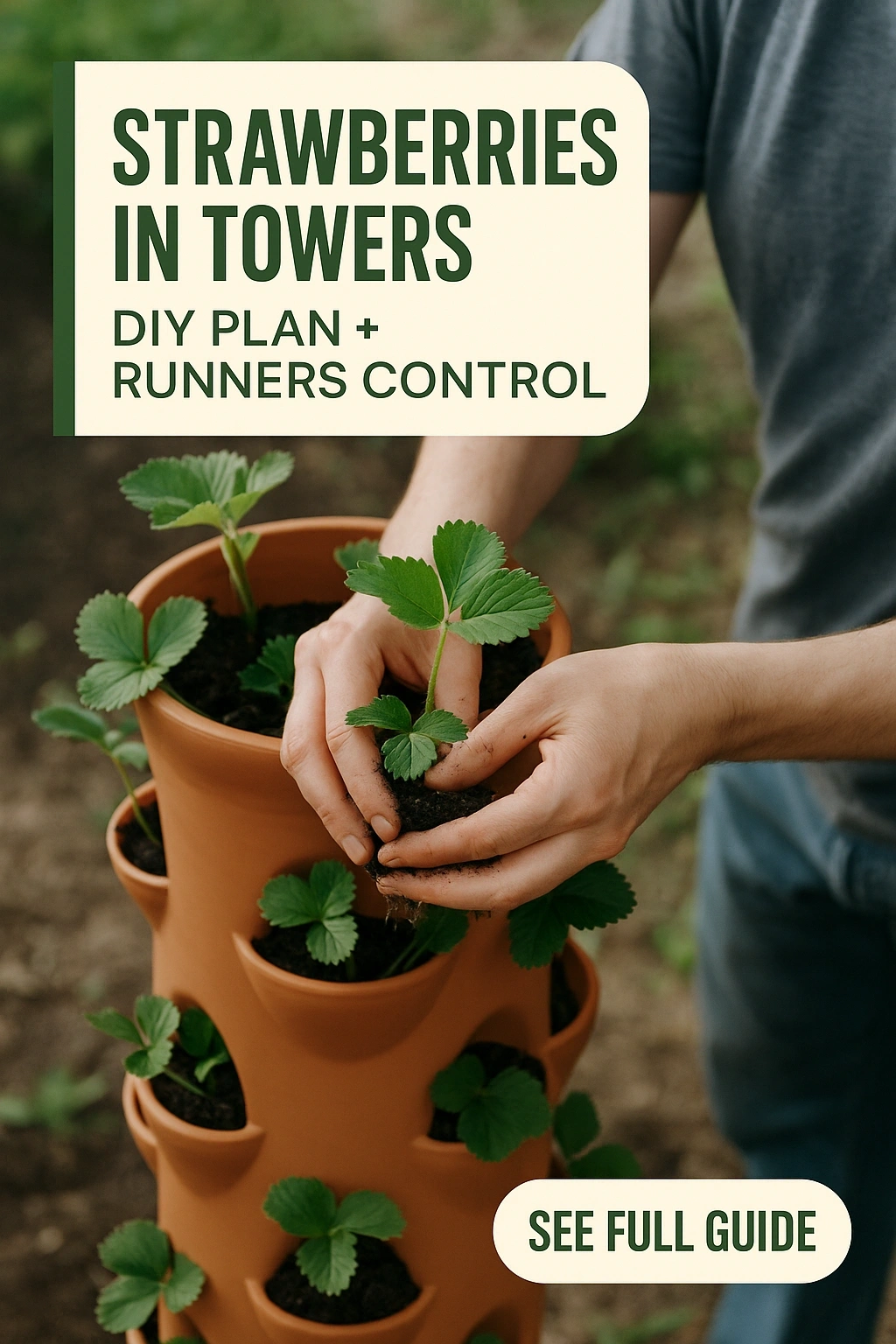
Growing strawberries can be a rewarding endeavor, especially when utilizing vertical gardening techniques like towers. However, managing strawberry runners can be a challenge. This guide offers practical tips for controlling runners effectively while maximizing your strawberry yield. Discover how to create an efficient system that not only saves space but also enhances the health and productivity of your strawberry plants.
Understanding Strawberry Runners
Strawberries reproduce through a method called vegetative propagation, where they send out runners—long stems that develop new plants at their tips. While this is a natural process, uncontrolled runners can lead to overcrowding, reduced fruit quality, and increased vulnerability to pests and diseases.
Benefits of Growing Strawberries in Towers
Vertical gardening offers several advantages for strawberry cultivation. Towers allow for better air circulation, easier access for maintenance, and improved drainage. This method also helps in controlling runners more effectively, preventing them from spreading uncontrollably.
Space Efficiency
Using a tower system maximizes limited space, making it ideal for urban gardeners or those with small backyards. By growing strawberries vertically, you can cultivate more plants in a smaller footprint, leading to a higher yield per square foot.
Improved Accessibility
Tower gardening elevates plants, making them easier to reach for harvesting and maintenance. This reduces the strain on your back and knees, making gardening a more enjoyable activity. Additionally, being at eye level allows for better observation of plant health and pest issues.
DIY Tower Construction for Strawberries
Building your own strawberry tower can be a fun and rewarding project. Here’s a step-by-step guide to creating an effective strawberry tower that will help you manage runners efficiently.
Materials Needed
- Wood or PVC pipes (4-6 inches in diameter)
- Potting soil
- Strawberry plants (varieties suitable for your climate)
- Drill and drill bits
- Watering system (optional)
Steps to Build Your Strawberry Tower
- Choose a Location: Select a sunny spot with good drainage.
- Create the Base: Cut your wood or pipes to the desired height, ensuring stability.
- Drill Holes: Make holes for planting strawberries, spaced adequately to allow growth.
- Fill with Soil: Add potting soil, ensuring it fills the tower without blocking the drainage holes.
- Plant Strawberries: Insert your strawberry plants into the holes, ensuring they are secure.
- Watering System: If using a watering system, set it up to ensure even moisture throughout the tower.
Controlling Runners in Strawberry Towers
Once your tower is established, managing runners becomes crucial. Here are effective strategies for controlling strawberry runners while ensuring healthy plant growth.
Regular Monitoring
Keeping a close eye on your strawberry plants is essential. Check for new runners regularly, especially during the growing season. This allows you to address any overgrowth promptly, preventing overcrowding in your tower.
Pruning Techniques
Pruning is a vital practice for managing runners. When you notice runners developing, you can either cut them off or redirect them to a designated area. This helps in focusing the plant’s energy on fruit production rather than vegetative growth.
Best Practices for Strawberry Care in Towers
In addition to runner control, proper care of your strawberry plants is crucial. Implementing best practices will ensure your strawberries thrive in a tower system.
Soil and Nutrient Management
Strawberries thrive in well-draining soil rich in organic matter. Regularly amend your soil with compost or organic fertilizers to provide essential nutrients. This promotes vigorous growth and optimal fruiting.
Watering Considerations
Strawberries require consistent moisture, especially during fruit development. Ensure your tower has a good watering system to maintain even moisture levels. Drip irrigation systems work well for tower gardens, reducing water waste while keeping plants hydrated.
Common Challenges in Tower Strawberry Gardening
While growing strawberries in towers can be rewarding, it does come with challenges. Understanding these can help you prepare and adapt your gardening strategies.
Pest Management
Pests such as aphids and spider mites can pose threats to your strawberry plants. Regular monitoring for signs of infestation is essential. Consider using organic pest control methods, such as insecticidal soap or neem oil, to manage these pests without harming beneficial insects.
Disease Prevention
Strawberries are susceptible to diseases like powdery mildew and root rot. To prevent these issues, ensure good air circulation around your plants and avoid overwatering. Removing any diseased leaves promptly will also help in maintaining plant health.
FAQs
How often should I water my strawberry tower?
Watering frequency depends on the weather and the size of your tower. Generally, check the soil moisture every few days. Water thoroughly when the top inch of soil feels dry.
Can I grow other plants with strawberries in the tower?
Yes, but be cautious. Choose companion plants that have similar water and light requirements, such as basil or marigold, to prevent competition for nutrients.
What type of strawberries are best for tower gardening?
June-bearing and everbearing varieties are excellent choices for tower gardening. They produce fruit at different times, allowing for a longer harvest season.
How do I know when to harvest strawberries from my tower?
Strawberries are ready to harvest when they are fully colored (typically red) and slightly firm. Gently twist or cut the stem to avoid damaging the plant.
What should I do with runners when they appear?
You can either prune them off to conserve energy for fruit production or redirect them into separate pots if you wish to propagate new plants.
By implementing these strategies and understanding the nuances of strawberry runner control, you can enjoy a bountiful harvest from your vertical strawberry garden. Happy gardening!
